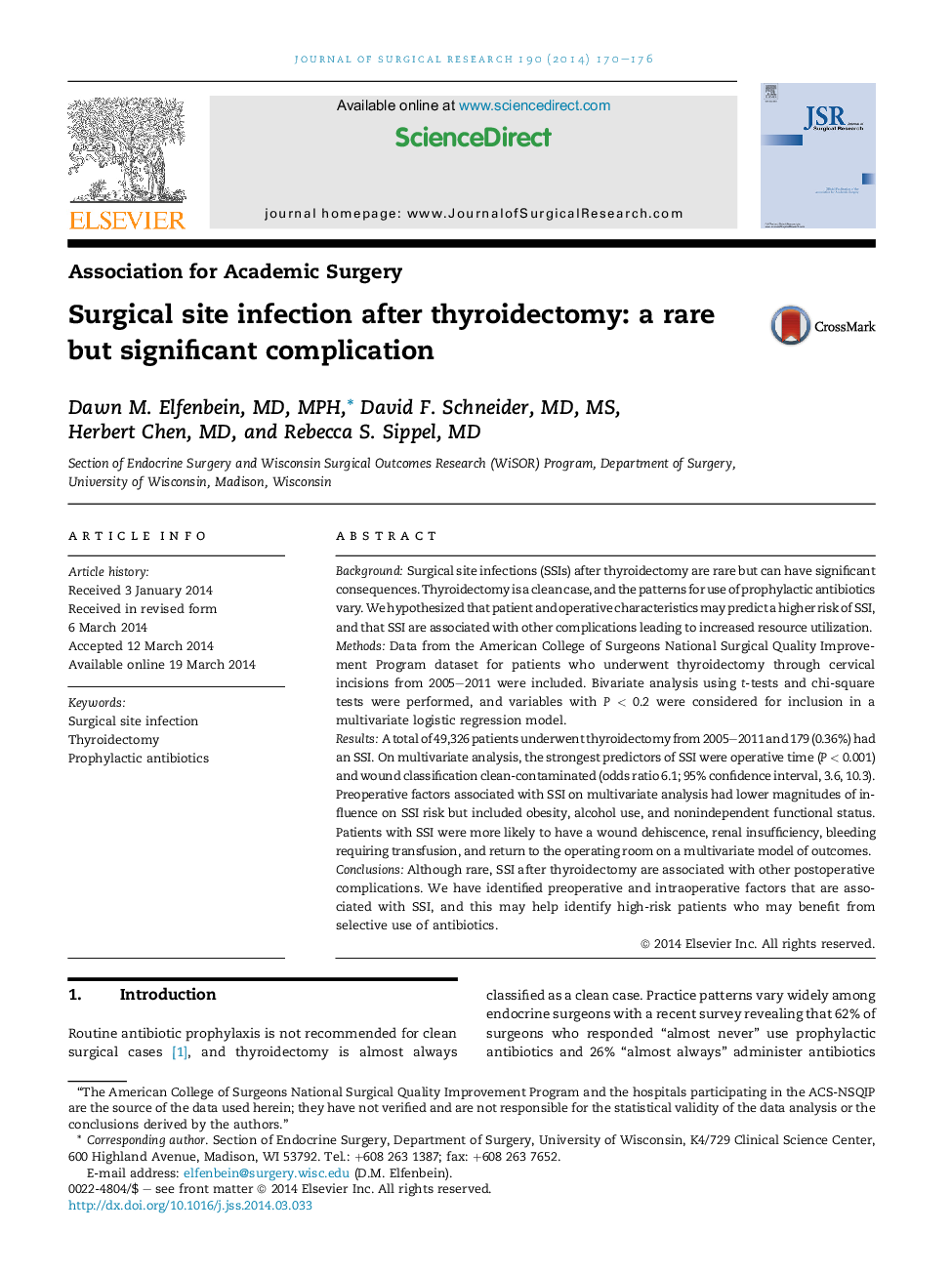| Article ID | Journal | Published Year | Pages | File Type |
|---|---|---|---|---|
| 4300177 | Journal of Surgical Research | 2014 | 7 Pages |
BackgroundSurgical site infections (SSIs) after thyroidectomy are rare but can have significant consequences. Thyroidectomy is a clean case, and the patterns for use of prophylactic antibiotics vary. We hypothesized that patient and operative characteristics may predict a higher risk of SSI, and that SSI are associated with other complications leading to increased resource utilization.MethodsData from the American College of Surgeons National Surgical Quality Improvement Program dataset for patients who underwent thyroidectomy through cervical incisions from 2005–2011 were included. Bivariate analysis using t-tests and chi-square tests were performed, and variables with P < 0.2 were considered for inclusion in a multivariate logistic regression model.ResultsA total of 49,326 patients underwent thyroidectomy from 2005–2011 and 179 (0.36%) had an SSI. On multivariate analysis, the strongest predictors of SSI were operative time (P < 0.001) and wound classification clean-contaminated (odds ratio 6.1; 95% confidence interval, 3.6, 10.3). Preoperative factors associated with SSI on multivariate analysis had lower magnitudes of influence on SSI risk but included obesity, alcohol use, and nonindependent functional status. Patients with SSI were more likely to have a wound dehiscence, renal insufficiency, bleeding requiring transfusion, and return to the operating room on a multivariate model of outcomes.ConclusionsAlthough rare, SSI after thyroidectomy are associated with other postoperative complications. We have identified preoperative and intraoperative factors that are associated with SSI, and this may help identify high-risk patients who may benefit from selective use of antibiotics.
